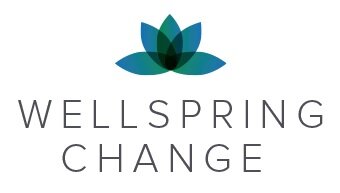Around this time of year, I remember my father would return from daily walks around the common in early Spring: he’d recount the gradual swelling of the sticky buds on chestnut trees, finally announcing the magnificent symphony of unfurling leaves.
By contrast to this witnessing of gradual emergence, many recent conversations have turned to the days melding into one another, one day flows into the next, a familiar pattern of lockdown, much less human contact than most of us need or want, more online time than is healthy. None of us know when or how life can re-emerge into a greater unfurling - it’s a bit like living in the valley-mists:
“I wondered what the valley folk would see on this misty morning. Would they look to the sky and feel cheated because there was no sky to see? Or would they trust that somewhere on the high mountaintop, the Winged creatures still flew and the sun still shone, and the beauty abounded in every part of nature?”
By Jamie Sams, Earth Medicine
Nature embodies an ancient wisdom and heartbeat, and we contribute to it with our own dreams and visions, and the way we choose to express life. I am not suggesting there’s some simple back-to-nature Pollyanna solution - our complex and rapidly changing weather systems and the speed of mitigating response makes that seem implausible. Yet, systemic ways of understanding human beings and our inextricable nature-connection leads me to wonder about this inter-relationship.
How for example might the Coronavirus pandemic be linked to climate change? Professor Jem Bendell wrote a year ago; his article is definitely worth a read.
“If the impact of Covid19 is another step in the collapse of modern societies, then it is likely it will have been another climate-driven step in that collapse.”
Jem Bendell
I want to return to our human connection to Nature. How can we tap into ancient inter-connectedness with Nature, what wisdom can we draw from, at the same time as we live through the midst of this pandemic?
Treasures are there in human traditions that honour the heartbeat of the land, and indigenous people remind us of this way. Their wisdoms are beginning to gain credence, take a look at the “If not Us, then Who? short documentary films.
In ‘Earth Wisdom’ Glennie Kindred writes about Imbolc, the ancient Celtic pagan festival of awakening, marking the halfway point between winter solstice and the spring equinox. Imbolg meaning “in the belly” marks the beginning of the lambing season, new life and milk, new beginnings. We recognise the swelling of the life force, of the sap rising in trees and spring bulbs.
Letting go of the past is an essential step to welcoming in the new. Sometimes it warrants seeing and understanding old behaviours, patterns and beliefs before they can be sacrificed. Challenging as this pandemic continues to be on so many levels, it invites a focus on this.
Imbolc is a time to work with our intuition, to inspire leaps of understanding and express our deepest wishes, beliefs and feelings. In my work as a therapist, I think that for human wishes and beliefs to manifest, we need to attend to where things are stuck too: grief and sadness are often the mouth into these caves of healing.
I read that the Willow tree was associated with Imbolc. It has this capacity to be cut from a branch almost any time of year, and when we put the branch into the soil it just roots. It therefore symbolises hope and vigour. Sometimes people who were grieving deeply would wear a fresh Willow garland to allow them to express their emotions and grief more readily. I wonder what a modern-day collective willow-garland ritual might look like. Deep Adaptation points to ways in which we can collectively work with and through grief.
Imbolc is also a time for action fired from within. In the Celtic, and other world traditions at this time of year, fire ceremonies help transform winter’s static feminine energy into the more dynamic masculine active principle of energy, providing passion to our visions.
If you’d like to read further about the Celtic festivals as a way to tune into your heartbeat and that of the land, I recommend a wonderful piece of writing by Agatha Manouche, called Heartbeat of the Land. My deepest gratitude to Agatha as a living ancestor and teacher; her writing embodies decades of living this heartbeat. Gratitude also to the unbroken lineage of teachers before her.
By way of closing this blog, I invite you to consider:
What has been curled up within me, and what can I feel is unfurling?
What can I transform through my inner fire, perhaps a letting-go ritual with a fire?
What new habits, fresh ways of being in the world will serve me now?
In Landscapes of Change, Kirstin and I have held space with a wonderful tribe of pop-up communities - sometimes at Hazel Hill Wood, sometimes in our virtual campfires. We invite you to share your inner and outer life, so together we unfurl individual and collective buds, like hieroglyphs we sense their meaning. To find out more about our next workshop visit here.
Thanks to Nao Takabayashi on Unsplash for the title image.


